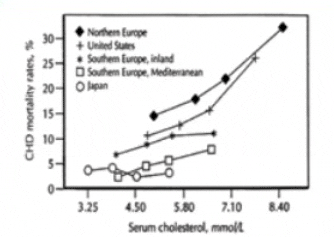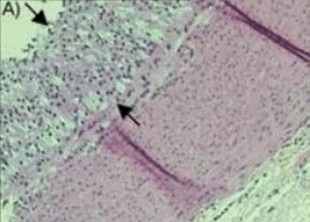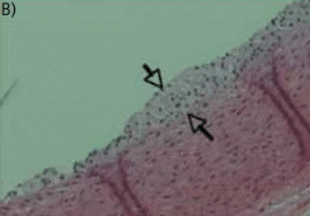From both nutritionist and aquaculturist points of view, our aim is to sustainably produce aquatic food with superior sensory properties and high cardioprotective properties. The reason is that although preventable, cardiovascular diseases (CVDs) remain the top global cause of death and stroke.
The prevention of atherosclerosis is, therefore, a major objective of modern medical and biochemical investigations into the mechanism of atherosclerosis and how the structure of food components determines their role in the mechanism(s) involved. The composition of aquafeeds and their impact on the nutritional value of aquatic food is a focal point of today’s research and development both in academia and industry.
Since the study of the seven countries (Keys et al., 1984), some unanswered questions still remain as to why cohorts in Greece and Italy had coronary heart disease (CHD) at low frequencies but high levels of serum cholesterol (Figure 1).

There is compelling literature on the beneficial role of omega-3 polyunsaturated fatty acids (omega-3 PUFAs) and there is a core belief that fish is good for our heart because of these PUFAs. Mechanistically, though, it is not clear how omega-3 PUFAs work. Their postulated mechanism in preventing atherosclerosis could be through lowering the levels of triacylglycerol, preventing arrhythmias, decreasing platelet aggregation or lowering blood pressure (Saravanan et al., 2010).
On the other hand, the association of omega-3 PUFAs and CVDs has been revised recently by evaluating all randomized trials on the supplementation of omega-3 PUFAs to adults (Rizos et al., 2012). In this review, the results of 20 studies on 68,680 patients were evaluated and omega-3 PUFAs were not found to be statistically significantly associated with CVDs in various patient populations. In the light of this study, we may need to refocus our research quests towards feed and food components with proved cardioprotective activities.
Polar Lipids of Fish
Lipid microconstituents of specific food that constitute important ingredients of the Mediterranean Diet have been found that they have in vitro (in the test tube) important cardioprotective properties (by inhibiting the actions of the so called Platelet Activating Factor, PAF). PAF is the most potent inflammatory lipid mediator, a well-recognized agonist of platelet aggregation that plays a crucial role in atherosclerosis, i.e. the development of cardiovascular diseases. These lipid micro-constituents can practically inhibit the onset of atherosclerosis and the development of CVDs(Zabetakis et al., 2013). Such lipids have been found in a wide range of food such as red and white wine, yoghurt, fish, olive oil and olive pomace. Further in vivo (using rabbits) studies of olive oil, olive pomace and aquacultured fish (Nasopoulou et al., 2010) have re-confirmed that it is the polar lipid fraction of these food sources that can reduce the thickness of atherosclerotic lesions in hypercholesterolaemic rabbits (Figure 2).


In a further mechanistic study, our group has recently demonstrated that the polar lipids of sea bream have down-regulated PAF biosynthesis and up-regulated PAF catabolism; practically the polar lipids of fish can inhibit atherosclerosis related enzymatic activities (Nasopoulou et al., 2011b).
Heavy Dependency on Fish Oils
The steadily increasing population on Earth makes the sustainable production of food one of the major nutritional problems for mankind to address. In terms of food security in aquaculture, we need to face successfully a ‘paradox’ on the sustainable production of fish feed: today, high amounts of fish oil (FO) are required to produce fish feed. Currently, 40 percent and 60 percent of the global production of fishmeal and fish oil, respectively, are used in aquaculture. Salmonid diets alone consumed over 55 percent of the fish oil used by the aquaculture sector in 2006. About 50 percent of world marine fish stocks have recently been estimated as fully exploited, 32 percent as overexploited and only 15 percent as underexploited. These exploitation data suggest that the diminishing levels of available wild fish worldwide combined with the fact that aquacultured carnivorousspeciesrequire large amounts of wild fish in their feed create an emerging necessity to improve our resource management practices.
Need for Novel Sources
In order to reduce dependence on fish oil, significant breakthroughs have occurred over the past few yearsin replacing it with plant oils. By substituting feeds with plant oils, it also serves to reduce costs due to the fact that vegetable oils have steadily increasing production, high availability and better economic value. Several studies have been carried out to investigate certain vegetable oils as possible sustainable partial substitutes for fish oils in compounded fish feeds. The most common vegetable oils used for fish feed production have been soybean, linseed, rapeseed, sunflower, palm oil and olive oil. Soybean and rapeseed oil are considered possible alternative lipid sources for salmonids, freshwater and marine fish since they are rich in PUFAs, especially linoleic (18:2 ??6) and oleic acid (18:1 ??9), but devoid of n-3 PUFA. However, in some cases, fish oil substitution by 60 percent rapeseed oil has been found to decrease European sea bass (Dicentrarchus labrax) growth. Soybean oil appears to be a better plant lipid source regarding gilthead sea bream (Sparus aurata) growth while considerable savings in feed costs could be achieved if it could be used as a partial dietary substitute for fish oil within compound feeds. The same is true of linseed oil and rapeseed oil, although to a lesser extent.
Furthermore, the use of palm oil in diets of Atlantic salmon and rainbow trout has given growth and feed utilization efficiency comparable to fish fed with equivalent levels of fish oil. Olive oil could also be used as a partial substitute for dietary fish oil in European sea bass culture, during growth out phase, Atlantic salmon (salmo salar) and rainbow trout(Oncorhynchus mykiss) with data showing similar growth ratesto the ones when fish was fed on 100 percent fish oil diet. All these studies have been recently reviewed (Nasopoulou and Zabetakis, 2012).
New, alternative and in a way ‘nonorthodox’, sources of lipids need to be identified and valorised in order to achieve sustainable production of fish feeds and thus enabling the further development of aquaculture applications. Such promising lipid sources are vegetable oils (VO). The use of VO based aquafeeds has some strong advantages. Olive pomace (OP) and olive pomace oil (OPO) are natural by-products of olive oil production, which contain micro constituents with atheroprotective (substances) activity such as PAF-inhibitors and phenolic/polyphenolic molecules with antioxidant and other pleiotropic actions. Extensive research has been carried by our team on olive oil by-products and fish with regard to their capacity to prevent atherogenesis.

Recently, the possibility of partially replacing fish oil in gilthead sea bream and sea bass grow-out diet by lipids obtained from OP and olive pomace oil (OPO) has been reported. In actual fact, the feeding of OP to fish results in an improvement in its ability to prevent atherosclerosis and therefore cardiovascular diseases (Nasopoulou et al., 2011a).
GM Plants
There have been numerous studies on genetically modifying the plant oil profile so the plants increase the biosynthesis of either the precursors of omega-3 and omega-6 fatty acids or these fatty acids themselves. These modifications have focused on C 18 ?6-desaturated fatty acids (such as ?-linolenic and stearidonic acid), omega-6- long-chain PUFAs (such as arachidonic acid) and omega- 3-long-chain PUFAS (often referred to as ‘fish oils’) (such as EPA and DHA) and they have been recently revised (Haslam et al., 2012). The research approach is based on the assumption that omega-3 and omega-6 PUFAs have considerable nutritional value and thus efforts have focused in enhancing the bioformation of these molecules in the ‘designer’ oils (after genetic modification).
However, under the light of recent evidence that omega PUFAs have less nutritional value that previously considered (Rizos et al., 2012), these genetically engineering approaches need to be carefully considered. Scientifically, we need to assess any related environmental impact when GM plants are cultivated and commercially, we need to address the public concerns and need of the consumers (at least in EU) for ‘GMO free’ food.
Food for Thought/Future Actions
In today’s rapidly changing world, we are asked to face conflicting problems and issues such as the overproduction and waste of food, obesity, CVDs and diabetes in the developed countries, famine and malnutrition in the developing countries, climate change, scarcity of water, rational use of cultivated land and sustainable use of resources and energy. In this complex and swiftly changing environment, the issue of food security and on how we can secure nutrition for the entire human population becomes a top priority for all of us in the feed and food arena. The sustainable production of food is a complex challenge. Some insights in approaching this challenge have been highlighted with this article.
July 2013



